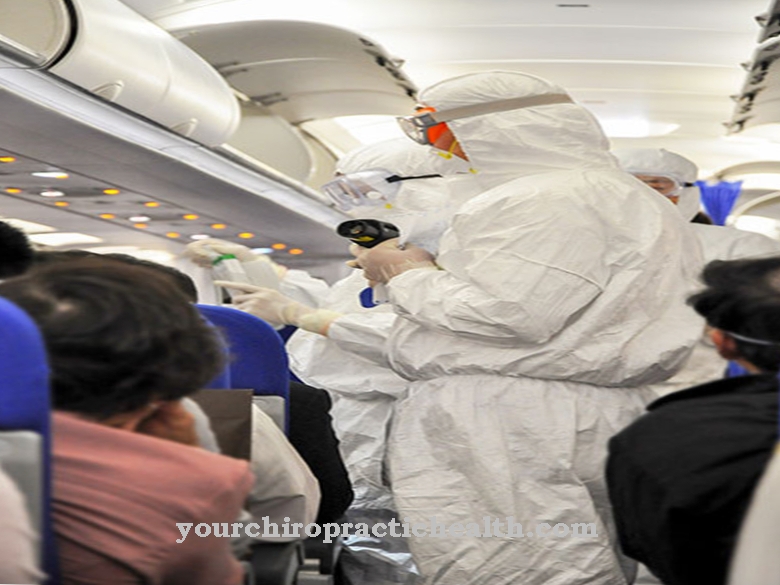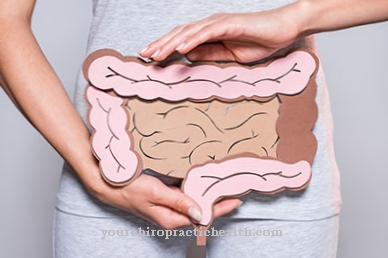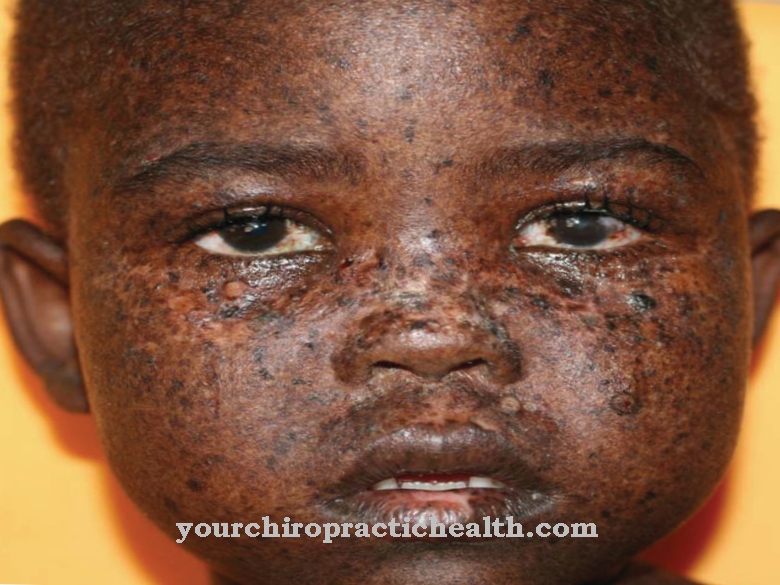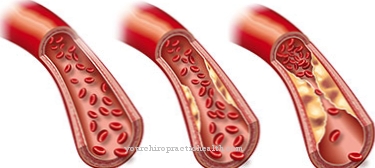In the Xerophthalmia dry out the cornea and conjunctiva of the eye. Vitamin A deficiency is usually the cause of the disease, which is particularly widespread in developing countries. The treatment takes place through vitamin A substitution or through the production of an artificial tear film.
What is xerophthalmia?
The cornea is the foremost, strongly curved and transparent section of the eyeball in front of the pupil. The transparency of the cornea is essential for the eye to function. The homogeneously structured surface is covered by a tear film. The conjunctiva, i.e. the conjunctiva, is also an important part of the eyes.
The mucous membrane-like layer of tissue connects the eyeball with the eyelids. Both of these elements of the eye can be impaired in their function by diseases. This is a disease that affects the cornea and conjunctiva at the same time Xerophthalmia. It is a dehydration phenomenon that often leads to blindness. The disease is most common in developing countries.
The age group mainly affected is that of young children. For this reason, xerophthalmia is also called Child blindness known. Dry eye syndrome occurs from time to time in western industrialized nations. This phenomenon is to be distinguished from xerophthalmia in the narrower definition, although in the literature any type of dry eye is sometimes referred to as xerophthalmia.
causes
A xerophthalmia can have different causes in the broader definition. In the narrower definition, hypovitaminosis is the causative factor. Without vitamin A, the conjunctiva and cornea can dry out. In most cases, such deficiency symptoms are caused by poor diet or malnutrition.
Severe vitamin A deficiency dissolves the collagen matrix, softens the cornea and irreversibly destroys the eye. Due to the malnutrition situation in developing countries, xerophthalmia is the most common cause of blindness to this day. South and East Asia as well as African countries, Latin America and the Middle East are particularly affected.
In the broader definition, xerophthalmia can also be caused by incomplete eyelid closure in the sense of lagophthalmos, although not all of the changes described occur. In addition, tear secretion disorders can cause similar symptoms, for example in the context of Sjögren's syndrome.
Symptoms, ailments & signs
The symptoms of xerophthalmia depend on the primary cause in each individual case. If there is a vitamin A deficiency, less light-sensitive pigment is produced in the rods.An incipient xerophthalmia can therefore manifest itself in the context of vitamin A deficiency in the form of night blindness. The epithelial cells in the conjunctiva also keratinize.
In addition to this keratinization, matt white spots appear on the conjunctiva. The cornea becomes dry and rough at the same time. Vessels form on the cornea. The view is impaired by the change in transparency. In xerophthalmia with a cause other than vitamin deficiency, there is no deficiency of light-sensitive pigment. However, the conjunctiva and cornea dry out in any case. In addition, many patients complain of severe itching in the eye.
In addition, the appearance is associated with a subjectively perceived foreign body sensation. If the eyes continue to dehydrate, the protection of the antibacterial tear film is missing, so that over time inflammations such as conjunctivitis or keratitis can occur. If left untreated, complications such as keratomalacia can result, which can cause irreversible impairment of vision.
Diagnosis & course of disease
The diagnosis of xerophthalmia is mainly based on anamnetic and visual diagnosis. The diagnosis is based on a cause. In western countries, tear secretion disorder is the most common cause. Secretory disorders are detected using the Schirmer test.
Blotting paper strips in the conjunctival sac absorb the tear fluid. If there are deficiencies, the attached paper remains dry. Vitamin A deficiency can meanwhile be clarified by [blood test blood analysis]]. The prognosis for patients with xerophthalmia depends on the primary cause and its treatability. The stage of xerophthalmia also plays an important role in the prognosis.
Complications
In many cases, the symptoms of xerophthalmia are not particularly clear, so that early diagnosis and treatment of this disease cannot be initiated. Those affected primarily suffer from night blindness, which can have a very negative effect on everyday life and quality of life.
The affected person's cornea dries out and there is a strong sensitivity to light as well as permanent itching in the eye. The eyes often swell due to the severe itching. A foreign body sensation also occurs in the eye due to xerophthalmia and can negatively affect the eyesight of the person affected.
Furthermore, inflammation and infections can occur in the eye if the disease is not treated. An irreversible restriction or reduction in vision can also be a disease-related consequence. The treatment of xerophthalmia is usually done without complications and can limit the symptoms relatively well.
Those affected are dependent on the intake of supplements and the use of eye drops. In most cases this will limit all complaints. The life expectancy of the person affected is not negatively influenced by xerophthalmia.
When should you go to the doctor?
People who prefer a one-sided diet are well advised to initiate a check-up visit to a doctor at regular intervals. The general state of health should be checked so that an appropriate response can be made in the event of abnormalities. An unbalanced diet often results in a lack of vitamins or other important and vital nutrients, which must be recognized and changed in good time. If the eyesight is impaired, a doctor must be consulted.
Blurred vision, hypersensitivity to the effects of light or night blindness are worrying. A doctor's visit is necessary for these complaints so that the cause can be clarified. Severe itching of the eye is also to be understood as a warning signal from the organism. If there is redness or open wounds in the area of the eyes or eyelids, action is required. If the disease progresses unfavorably or without medical treatment, irreversible damage to the eyesight can occur.
Failure to work with a doctor can lead to blindness. It is therefore advisable to consult a doctor at the first changes or abnormalities in vision. An unusually dry eye or cornification should be examined and treated as soon as possible. In addition, it is advisable to consult a doctor in the event of general malaise or other diffuse complaints in the organism.
Treatment & Therapy
The therapy of xerophthalmia depends on the primary cause. A causal treatment must be sought, for example in the case of a causal vitamin A deficiency through intravascular vitamin substitution. Tear fluid treatments are available as symptomatic treatment options.
The missing tear film is compensated by replacement fluid. If functional impairments of the meibomian glands are the cause of xerophthalmia, eye drops with anakinra are given. The human interleukin antagonist is known as an active ingredient in the treatment of rheumatoid arthritis and also appears to be able to relieve xerophthalmia. In Germany, however, the approval of the eye drops is still pending.
In addition, antibiotic eye drops are used in off-label use. These drops mostly work with the active ingredient azithromycin and prevent complications from bacterial infestation. Antibiotics act directly on the epithelia within the meibomian glands. This not only prevents bacterial infestation. This also stimulates the formation of a greasy secretion that can keep the eyes permanently moist.
Inflammation caused by complications is reduced by administration of high doses of antibiotics in order to prevent inflammation-related late complications and thus irreversible damage to the eyes. In principle, irrespective of the cause, xerophthalmia is a relatively easily controllable disease in industrialized nations that usually does not cause any irreversible damage. In developing countries, however, it often leads to blindness to this day, as medical and food-related supplies are inadequate.
You can find your medication here
➔ Medicines for eye infectionsprevention
The vitamin A deficiency-related form of xerophthalmia can be prevented by a balanced diet and thus a balanced supply of vitamin A. Lid closure-related and other forms cannot be fully prevented. Anyone who notices a foreign body sensation in the eye should therefore always consult an ophthalmologist. An early diagnosis of xerophthalmia prevents irreversible damage.
Aftercare
In most cases, those affected with xerophthalmia have only very limited direct follow-up measures available. First and foremost, those affected with this disease should consult a doctor early to prevent other symptoms and complications from occurring. In the worst case, the affected person can go completely blind if treatment is not given in good time, so that a doctor should be contacted as soon as the first signs and symptoms of this disease appear.
Self-healing cannot occur. Those affected are usually dependent on the use of eye drops in xerophthalmia. This can limit and alleviate most complaints. As a rule, the person affected should ensure the correct dosage and regular use of the eye drops. If anything is unclear, questions or side effects, it is advisable to consult a doctor first. Regular checkups by an ophthalmologist are very important even after successful treatment. In most cases, xerophthalmia does not reduce the patient's life expectancy.
You can do that yourself
Xerophthalmia is often based on a nutritional deficiency in vitamin A. If the person concerned is outside a developing country, he should check and optimize his diet. The intake of individual foods per meal must be controlled and adapted to the needs of the organism.
Vitamin A is found in foods such as carrots, spinach, red peppers, apricots, broccoli and tomatoes. To alleviate the existing complaints, care should be taken to ensure that the foods mentioned are consumed in such a way that the daily requirement for vitamin A is adequately met. In addition, the eyes should be adequately protected from adverse effects. Avoid straining or overexerting your vision. Daily work should be carried out under optimal lighting conditions so that no complications are triggered. If there are signs of fatigue, rest phases should be taken. The organism needs time to regenerate so that no long-term damage to the eyesight occurs.
If the eyes are dry, prescribed drops must be used. An artificial supply of water or similar liquids is not advisable. In some cases, increasing the frequency of blinking can help relieve the symptoms. For this reason, the blinking mechanism should be increased automatically, particularly when the environment is dry or the air is polluted.













.jpg)

.jpg)
.jpg)











.jpg)